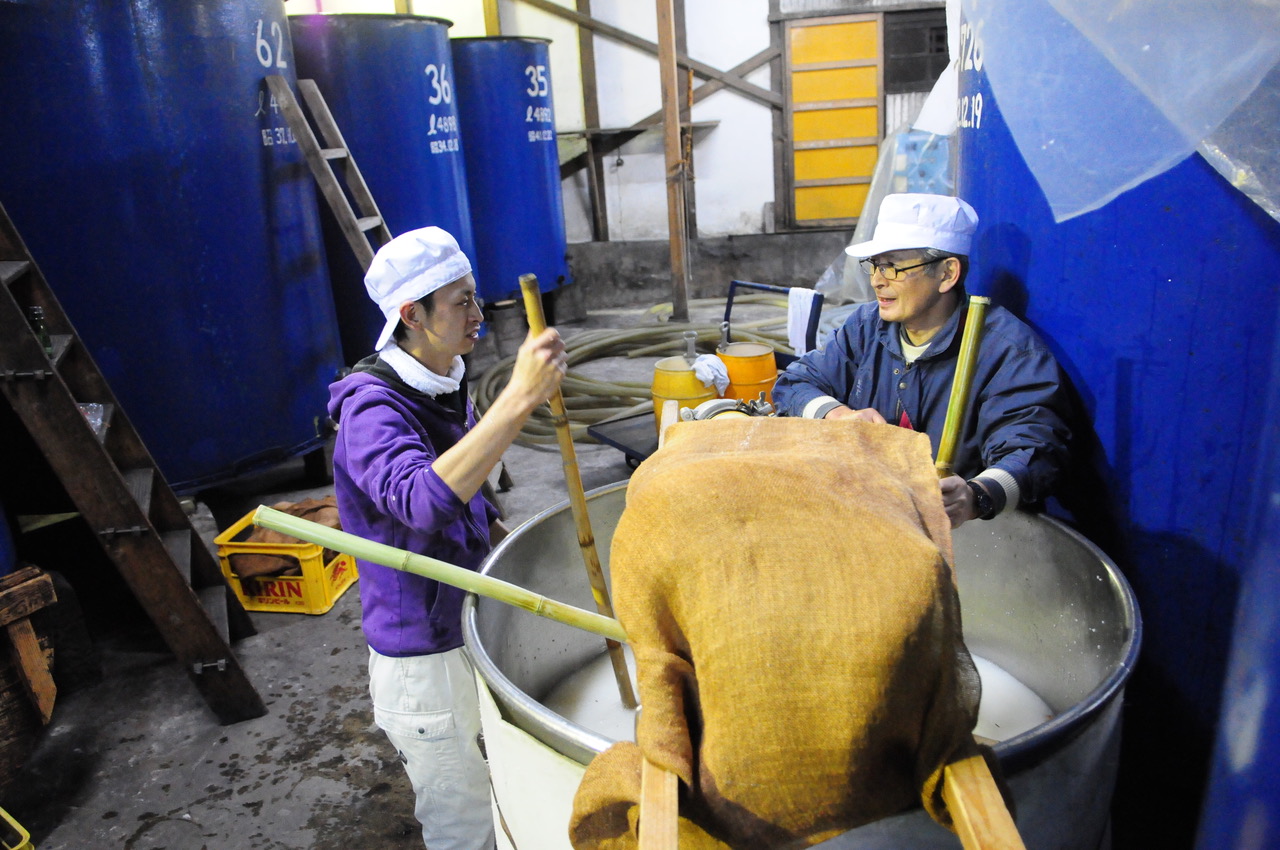KAMEMAN
亀萬

SINCE 1916
KUMAMOTO PREFECTURE
The Kameman story begins with Chinju Takeda, a physician in Kumamoto Prefecture in the early 20th century, whose patients often paid him in rice—a practice by no means unusual at the time.
As the bags piled up, he had the idea to turn his grains into drink.
The obvious move would have been to distill it. He was living a short hop from the country’s top rice shochu district, and even in winter, the days were a little too warm to make sake the traditional way.
He figured out how to do it, though. At night, the Kameman team leaves the brewery doors open to let the breeze in. And when they make their moromi mash, they throw in blocks of frozen spring water.
Even now, when it would be easier to install air conditioning or thermal tanks, Japan’s southernmost sake brewery still does it the natural way.
Their most iconic product uses organic rice, with ducks rather than chemicals to deal with pests and weeds, and not a speck is wasted. Though textbooks say you have to at least remove the husks of rice to saccharify the starches inside, at Kameman they figured out a way to brew without milling even a micron.
It took a lot of trial and error. “First we tried steaming the grains twice,” says kuramoto Shuichi Takeda. “But very little of the rice was saccharified and we could only get a tiny amount of sake. We got closer when we tried scratching the rice, but now we just crush the grains.”
The resulting sake, Genmaishu (brown rice sake), is the greatest riposte to the notion that polishing ratios have anything to do with quality of sake. It’s a phenomenally versatile sipper that’s now on menus in fine dining restaurants around the world.
The idea for the genmaishu came from a renowned sake professor who was one of Chinju’s sons, and uncle of Shuichi. Masahisa Takeda was a great driver of innovation, unhappy that sakes were all starting to taste alike. It was he who drove Kuniko Mukai to create her standout pink sake.
Shuichi now works alongside his son Ryusuke, third and fourth generation brewers making sakes that textbooks will tell you aren’t possible.
Send us a Message
"Working with nature allows us to reduce our carbon footprint, as well as protect the yeasts that live in our brewery and give our sake its unique taste."
Shuichi Takeda

